24 February, 2025 - 10:05 AM
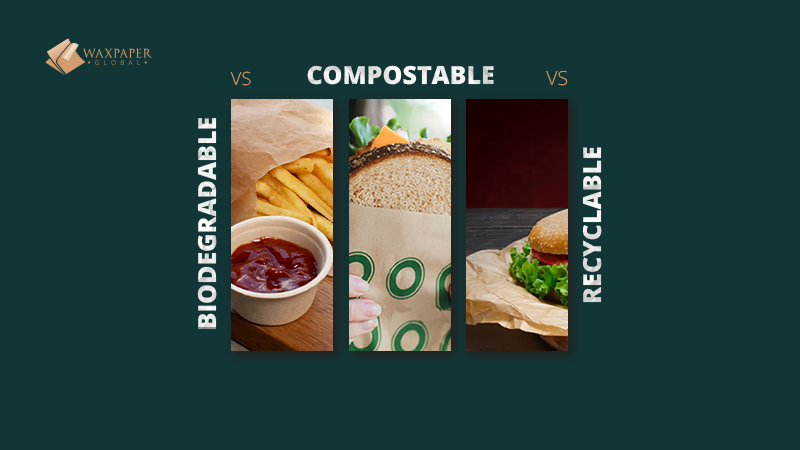
Biodegradable, compostable, and recyclable custom food papers are different on the basis of materials, coatings and ink composition. Biodegradable paper decomposes naturally but its drawback is that it may take longer in landfills.
The compostable paper completely breaks down in the right conditions but requires proper disposal. Recyclable food paper supports waste reduction but must be clean of grease and contaminants.
Custom printing affects sustainability, as there are some types of inks that can alter the eco-friendly properties of paper. Choosing the right option depends on food safety, disposal methods, and brand sustainability goals.
Sustainable packaging is no longer just a trend, it has become a business necessity. Over 85% of consumers express concern about plastic waste. This growing demand for sustainable packaging has put brands under increasing pressure to adopt eco-friendly packaging solutions.
Custom-printed food paper is a powerful branding tool, but its sustainability factor plays a crucial role in shaping customer perception and environmental impact.
Businesses often come across terms like biodegradable, compostable, and recyclable when choosing custom food paper. While they all have their own environmental benefits, their meanings, disposal processes, and real-world impacts are significantly different.
This guide will break down the differences between biodegradable, compostable, and recyclable custom food paper.
When selecting sustainable customized food paper, terms like biodegradable, compostable, and recyclable are often used interchangeably. Each one of these has unique features, characteristics, and disposal methods.
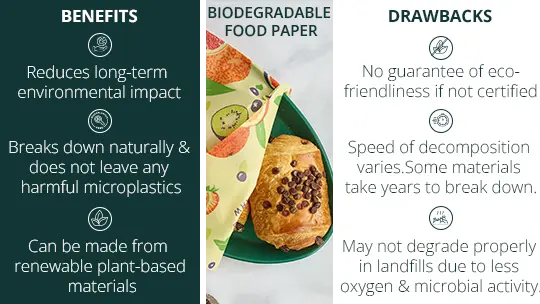
Biodegradable paper is often made from wood pulp, cellulose coatings, or starch-based laminates. It breaks down naturally but may leave minimal residues. It is designed to break down over time with the help of natural microorganisms like bacteria and fungi.
However, the speed and efficiency of biodegradation depend on different environmental factors. These factors include temperature, moisture, and oxygen levels.
You will find biodegradable food paper in restaurants, bakeries, and fast-food chains for wrapping sandwiches, pastries, and snacks. It is relatively costly but why do they choose it despite the higher cost? The simple answer to this is that it pays off in the long run.
Restaurants often have proper means to handle biodegradable waste.This allows them to handle biodegradable paper without making any significant changes in the operational structure. This ensures the paper breaks down effectively in commercial composting or composting bins.
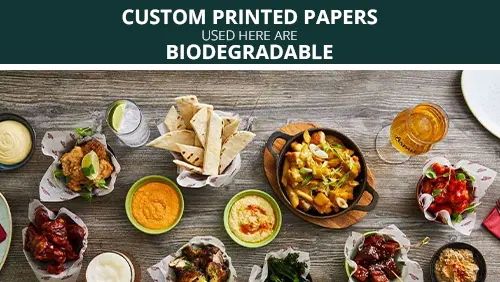
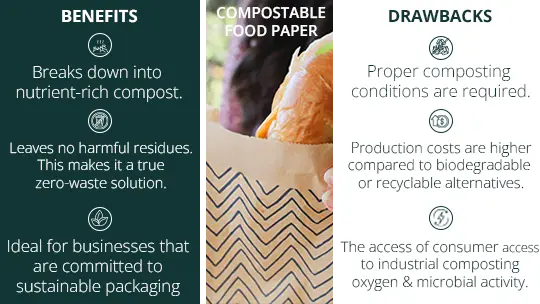
Compostable paper is commonly made from unbleached personalised kraft paper, PLA (plant-based coating), or sugarcane fibers. It decomposes without leaving any toxins.
It is the next step beyond biodegradable, which not only breaks down but also provides the soil with organic nutrients. Biodegradable material residues but compostable packaging disintegrates into non-toxic components within a limited timeframe under composting conditions.
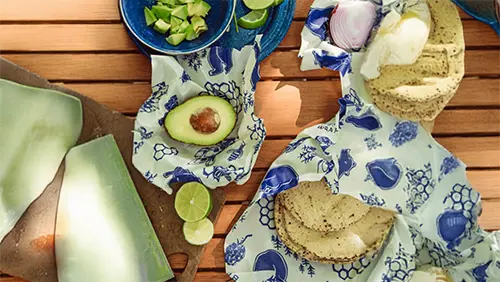
It has wide applications in organic food markets, eco-conscious cafes, and catering businesses that prioritize sustainability. The key part of their brand identity is being environment-friendly.
These industries prefer compostable options because this paper type provides a greener solution for packaging fresh products, sandwiches, and meal kits.
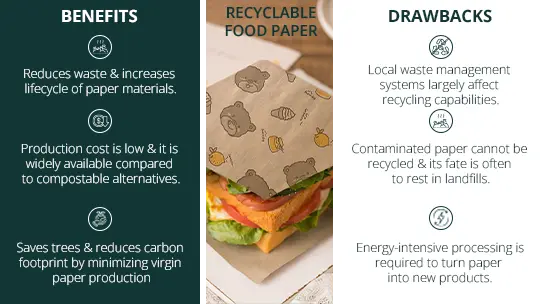
Recyclable paper is typically uncoated kraft, virgin fibers, or mechanically treated custom greaseproof paper that can be repurposed. It is designed to be reprocessed into new materials.
Its main purpose is to reduce the demand for virgin paper production and if disposed of properly, it can be repulped into new paper products. This helps minimize the waste and conserve resources.
It is ideal for delis, coffee shops, and grocery stores where grease-free packaging is possible. This paper is especially useful in businesses with high turnover of packaging materials.
These businesses prefer recyclable food paper because it supports waste reduction and aligns with increasing customer demand for packaging that can be efficiently recycled.
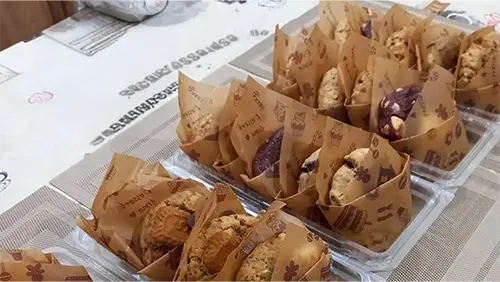
Customization through coatings and inks can have a major impact on the compostability and recyclability of food papers.
Coatings provide grease resistance but the material used for coatings must be chosen carefully. Plant-based or water-based coatings are ideal, as they have no negative impact on the ability of paper to decompose or be recycled.
Plastic coatings should be avoided, as these hinder the paper’s biodegradability and recyclability, contributing to waste.
Moreover, certified compostable, plant-based or water-based inks free from heavy metals must be used for branding. These inks ensure proper decomposition or recyclability.
Petroleum-based inks leave harmful residues that interfere with the breakdown process and they should be avoided.
You may like to read: Understanding the Coatings Used in Custom Food Paper
Choosing the appropriate kind of custom-printed food paper involves more than simply picking an environment-friendly solution. It is necessary to ask yourself these questions:
Compostable materials often cost more than recyclable ones. Therefore, you must make sure to achieve an optimum balance of sustainability goals and packaging’s usefulness.
Disposal methods and locations used by your customers will determine the most environmentally friendly packaging option. Compostable food paper might not decompose as planned if there are not enough composting facilities.
Recycling might not be an option if your packaging is prone to becoming oily. Knowing these elements guarantees that your food paper is environmentally friendly both in theory and in practice.
Contact us for professional assistance in selecting the ideal material for your company, whether you require recyclable, compostable, or biodegradable solutions. We make sure your packaging satisfies both market demands and environmental objectives.
No. Biodegradable materials decompose over time, although it may take a while and can be unexpected. Under composting proper conditions, compostable materials degrade within a set timeframe and leave no harmful residue behind.
Yes, the greaseproof food paper can be recycled, but there are certain conditions. It needs to be uncoated or made from recyclable materials.
Traditional wax or plastic-coated greaseproof paper is not recyclable. For precise instructions, contact the recycling center in your area.
Compostable paper requires specific composting conditions such as the right temperature, moisture, and oxygen levels to break down properly.
It might not break down as planned in landfills if the conditions are not right and might increase methane emissions. If at all feasible, it is best to dispose of trash in home or industrial composting facilities.
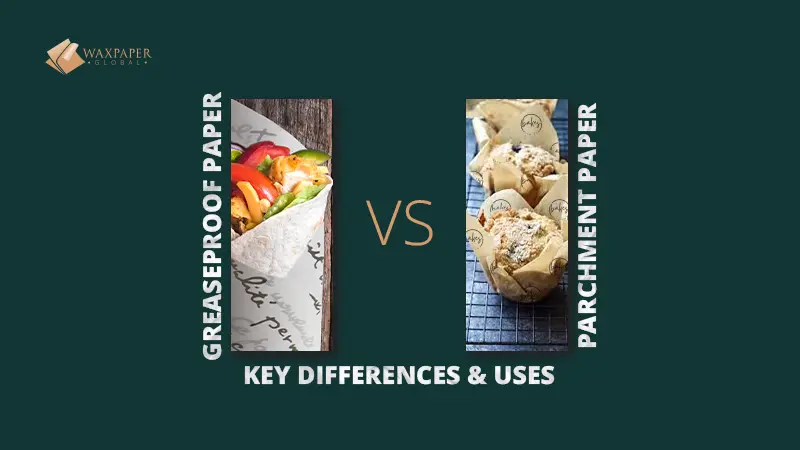
Greaseproof vs. Parchment Pa...
Parchment paper and greaseproof paper are interchangeable, but this is not true. Let's analyze the details and determine...
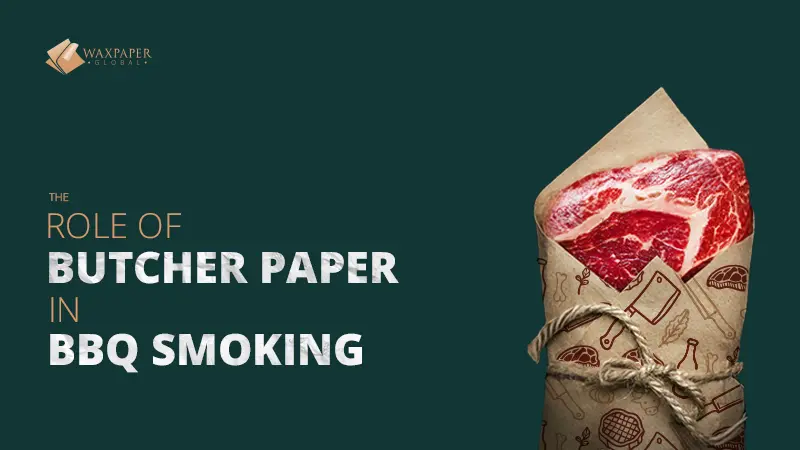
The Role of Butcher Paper in...
Butcher paper has gained popularity as a staple in Texas-style barbecue for its ability to allow smoke absorption while...
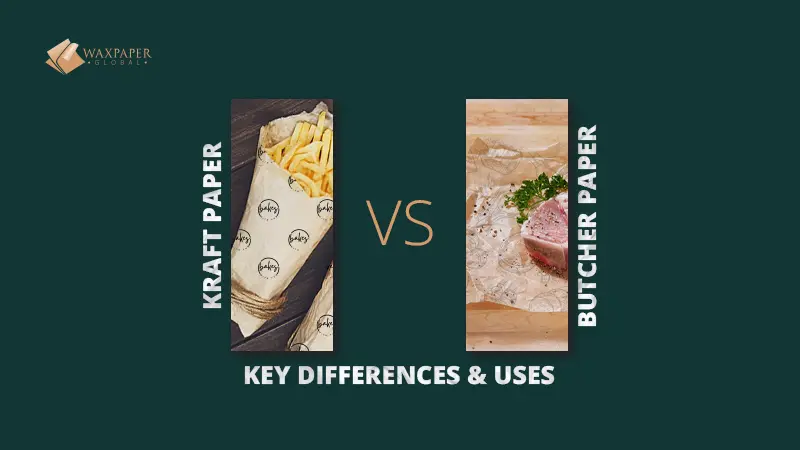
Kraft Paper vs. Butcher Pape...
This guide compares kraft paper and butcher paper in detail to help you determine the best fit for your business.
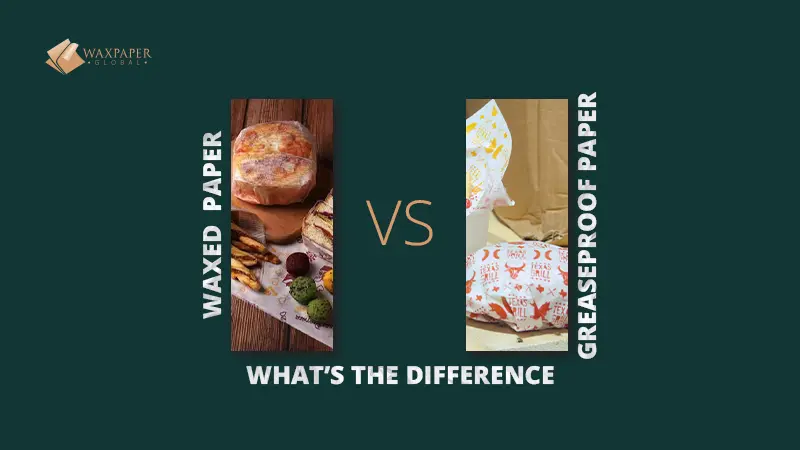
Greaseproof Paper vs. Wax Pa...
Explore the distinct characteristics of both of these types of papers and discover what suits your business.